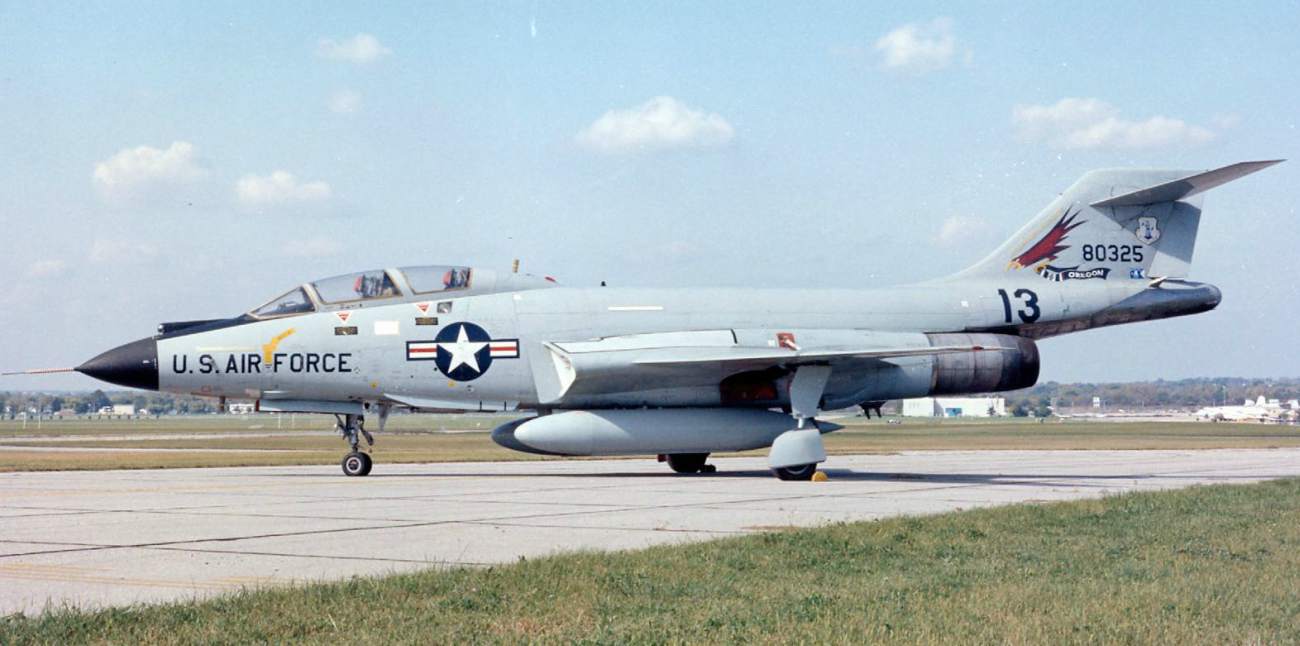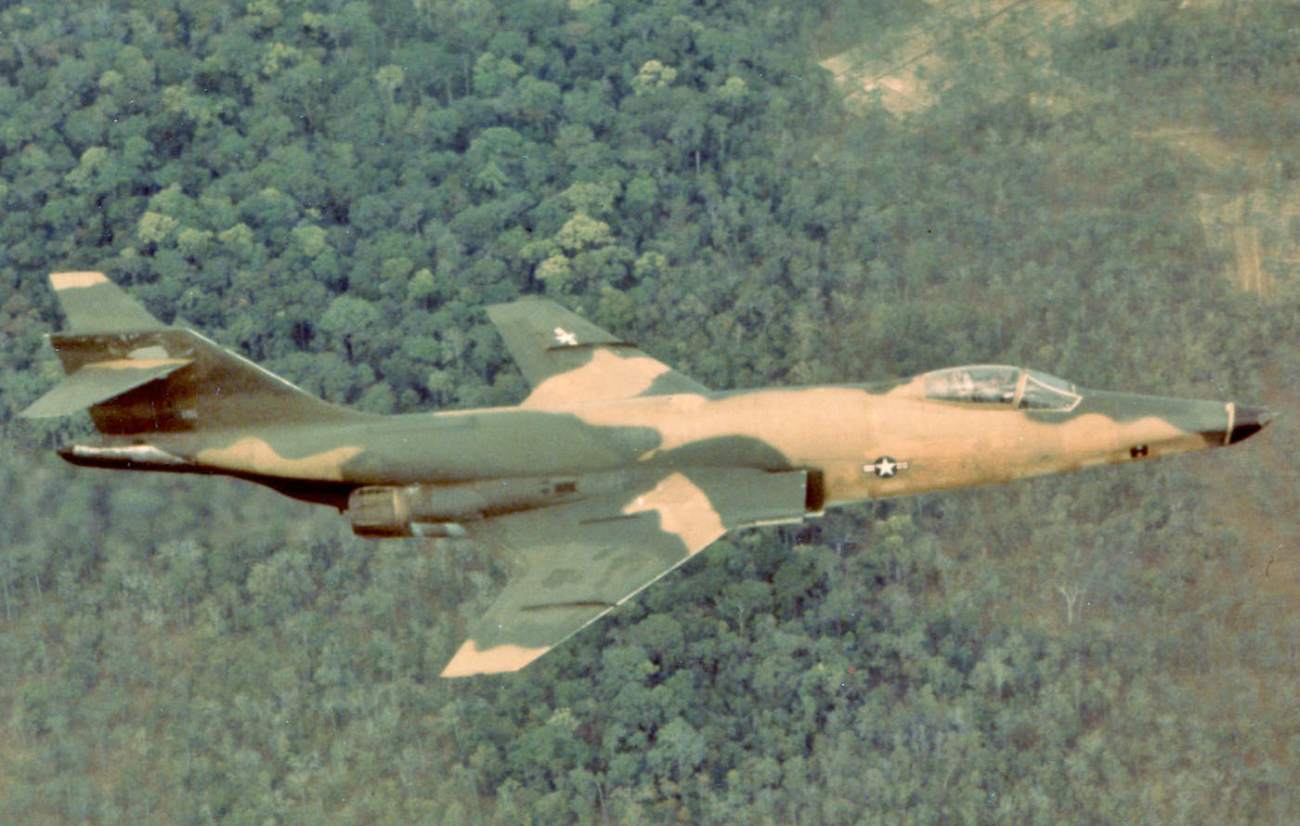McDonnell F-101 Voodoo
Originally created as one of the most versatile aircraft of all time, the F-101 Voodoo cemented its spot in history during reconnaissance missions. However, it also has supersonic fighter, all weather interceptor and bomber escort on its resume. Escorting long range bombers for Strategic Air Command was what the F-101 Voodoo was produced for initially. But with the rise of the B-52, a high-altitude jet bomber, the escort services of the F-101 Voodoo were no longer necessary. Since the B-52 came to power right at the beginning of the F-101’s production, tweaks were made to the Voodoo in order to transition it into a tactical and air defense aircraft for the Air Force.

History
The F-101 Voodoo aircraft was born from the McDonnell XF-88 all weather-interceptor. It’s first flight was in 1948 over California’s Muroc Dry Lake Air Base. Not long after, after only two XF-88s were produced, the Air Force canceled the project when the Korean War started. Four years later, the Air Force was ready to continue the project and gave McDonnell a contract to begin production on the F-101 series, based on the XF-88.
Versions
Multiple versions, with multiple distinct intentions, of the F-101 Voodoo were produced. The F-101A was a fighter/bomber; the F-101B was a long-range interceptor with two seats instead of one; the F-101C was an upgraded version of the F-101; the RF-101A was designed for reconnaissance purposes as was the RF-101C. The main difference between the two was the RF-101C was built for a two-man crew. The TF-101B was built as a trainer aircraft, and the CF-101F was built and transferred under license for Canada’s Royal Air Force Base.

Accomplishments
Speed is what put the the F-101 Voodoo on the map, reconnaissance during the Cuban Missile Crisis is what made it famous.
Both transcontinental and world speed records were established by the F-101. On November 27, 1957 – during Operation Sun Run – the RF-101A set the then-record for transcontinental flight. It flew from L.A. to New York and back in an astonishing six hours and 46 minutes. Sixteen days later, during Operation Firewall, the F-101A fighter/bomber set a new world speed record. The aircraft flew over the Mojave Desert at 1,207.6 mph, stamping the Voodoo in the record books at the time.
But the F-101s are best known for their work during the Cuban Missile Crisis. RF-101s flew over 80 reconnaissance flights over Cuba, and it was during one of these flights where images of Cuba dismantling their nuclear bases could be seen. Because of this important information, President Kennedy stated that the pilots during the Cuban Missile Crisis’ reconnaissance flights – the 363rd Tactical Reconnaissance Wing pilots – had done just as much to contribute to the United States’ safety as any other group of men in history.
The last F-101 Voodoo retired in 1986.
See F-101 Voodoo Specifications
| Length: 71 feet 1 inches |
| Height: 18.0 feet |
| Wingspan: 39 feet 8 inches |
| Max Speed: 1027.6 mph |
| Ceiling: 52,100 feet |
| Maximum Weight: 52,400 lb |
| Combat Range: 3,000 mi |
| Engine: 2 Pratt & Whitney J57-P-55s engines, 16,900 lbs. of thrust each with afterburner |
| Crew: Two |
| Armament: Two AIR-2A rockets plus two AIM-4 guided missiles |

